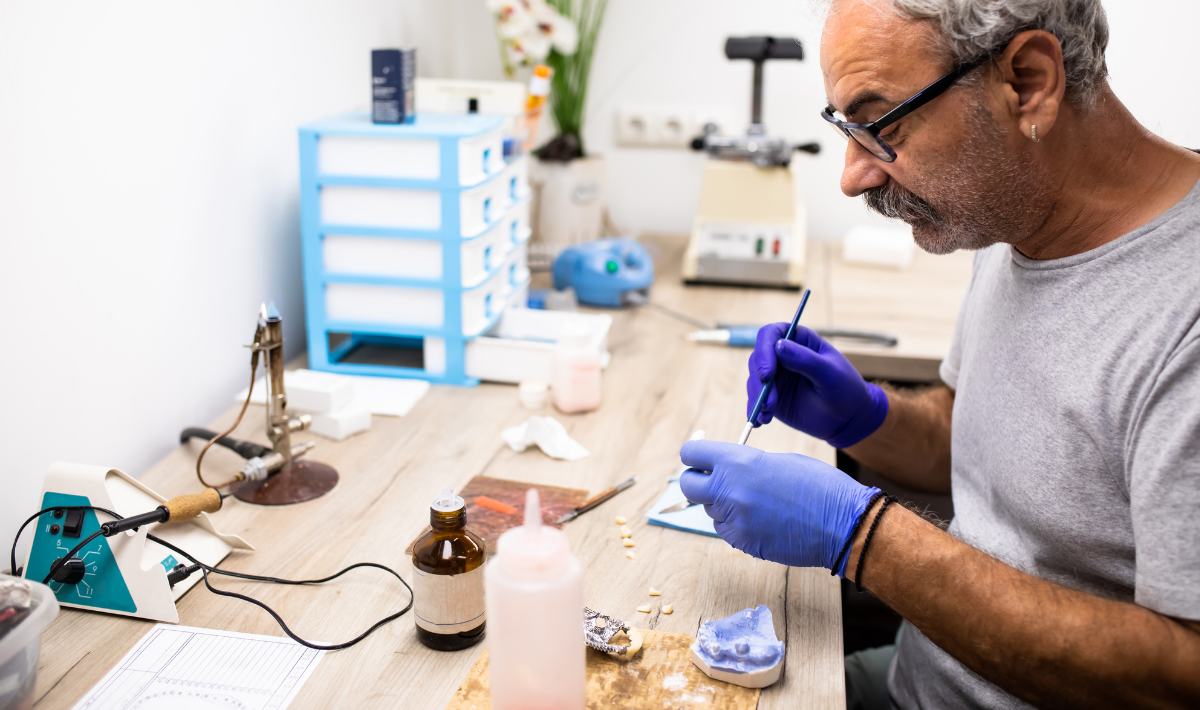Cosmetic dentistry calls for an investment of time, education and money on the part of dentists. But, the payoff is substantial for their practice and the well-being of their patients.
By Laura Thill
A patient’s beautiful smile is an advertisement for a dental practice, says Bill Paveletz, DMD, North America clinical educator, VOCO America. A smile makeover provides patients with a heightened sense of well-being, he says. “People notice a beautiful smile,” he says. “The first thing they see when they interact with others is their teeth.” Not only are teeth problems associated with speech impediments, an inability to chew food properly and poor physical health, when people don’t take care of their teeth, it suggests they might not care about themselves. “Dentists need to drive home to their staff that their patients are leaving with – and advertising – their work.”
As important as it is for group dental practices and their members to offer cosmetic dental services, doing so requires a huge investment of education, time, money and resources – so much so that industry experts such as Paveletz believe it should be considered a dental specialty. “Cosmetic dentistry isn’t always about veneers and whitening,” he explains. “When dentists take on a large cosmetic case, there’s a biomechanical and engineering aspect to consider.” Particularly when patients haven’t taken care of their teeth for many years, and their teeth have worn down, it requires reconstruction, he says.
“Every patient has a different bone and tooth structure,” he says. “When patients have neglected their teeth for too long, the bone structure may have deteriorated [to the point that] an implant won’t take.” In other cases, patients must retrain their facial muscles to respond to the new teeth after they are reconstructed. “These patients have worn down their teeth to the point that their muscles are responding to ¼-inch teeth, not ½-inch teeth,” he says. The list of maladies goes on, and in the end, if the dental work doesn’t turn out well, patients who have neglected their oral health often blame their dentist, he adds.
Add to that the fact that dental practices require higher tech equipment, such as CAD/CAM and CEREC, to perform crown lengthening and tooth reshaping. “New dentists coming out of school can’t always afford laser technology and CAD/CAM,” says Paveletz. Furthermore, extensive tooth reconstruction often necessitates dentists follow up with their patients through the years, which can be tricky for practices with higher turnover rates. Even basic services, such as teeth whitening, require dentists to stay on top of their patients, he notes. “When overzealous patients overuse whitening products, the dentist might recommend they use a toothpaste [designed to address] tooth sensitivity.”
With a little help from the group
As huge an undertaking as it may be to invest in cosmetic dentistry, doing so can lead to a substantial payoff for dentists and work in the best interest of their patients as well. “Dentists want to impress on their patients that their practice can provide their total care,” says Paveletz. “Bonding, veneers and whitening – these are the services that every dentist has access to and should offer to patients,” he says. “Whitening teeth takes less than an hour. In less than 1 ½ hours, a dentist can veneer the teeth, canine to canine, particularly when they use a template for the prep work. Dentists can change the look of their patients’ teeth in less than two hours.”
Moving to the next level is not so easy, he says. Investing in CAD/CAM can be a $100,000 investment, he points out. “And, dentists still require training and education, which means time away from their practice.” However, group dental practices can help by providing training and educational support. “And we do see this happening,” he says. The group will provide CE credits and bring in speakers [for their dental members]. Sometimes, they make this mandatory for their members.”
Indeed, if dentists don’t use the equipment and materials properly, they won’t achieve the best results for their patients, notes Paveletz. “The equipment can’t do all the work,” he says. “Dentists must know how to prep teeth properly in order for CEREC to do its job. And, new materials behave differently than older ones. For instance, newer bonding agents, which can work in wet environments, won’t fail if there is some saliva in the mouth. But, dentists need to know this. This is where the larger corporation can step in and educate its members.” The last thing anyone wants to see is for expensive equipment to sit unused, he adds.
Of course, it’s the patients who often dictate the course of treatment, notes Paveletz. They may be interested in a treatment they learned about on, say, the Dr. Oz show, or perhaps they are concerned about costs if their insurance won’t cover the service. “Sometimes it comes down to patients not wanting to invest in their mouth,” he says. Which is why it’s so important for dentists and their staff to take care of their own teeth, he adds. “If dentists are going to promote an aesthetic look, they should be using the product. They should tell patients, ‘I wouldn’t be promoting this composite if I didn’t believe in it and use it myself. And, look at the results.’” This is the best marketing tool dentists have at their disposal, he says.





